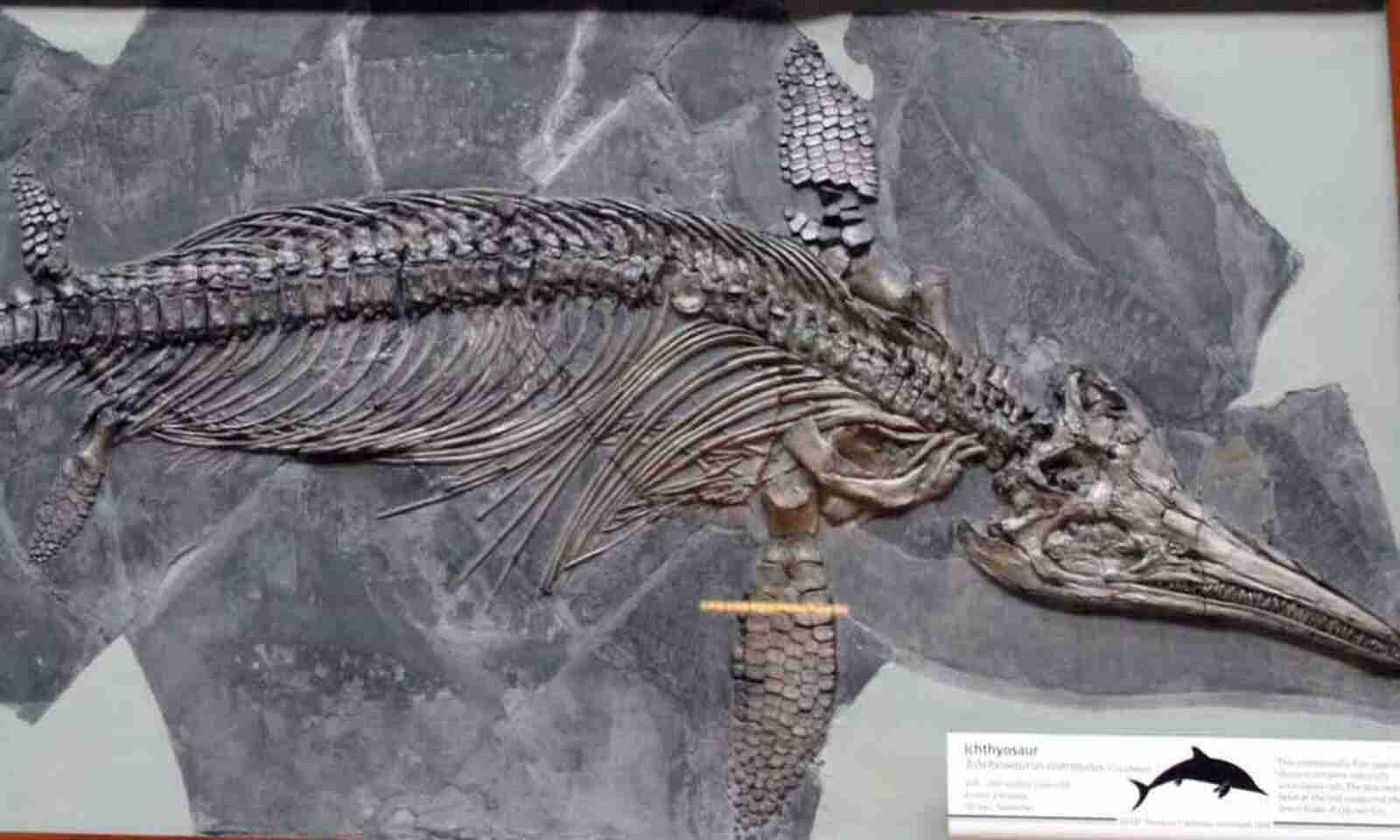A team of paleontologists led by Dr Patricio Zambrano Lobos from the Ruprecht-Karls-Universität Heidelberg in Germany has unearthed the well-preserved remains of 46 ichthyosaurs, both adults and juveniles, in southern Chile.

Section of ichthyosaur-bearing sediment unit at Tyndall ice field. Image credit: Wolfgang Stinnesbeck et al.
These specimens were discovered in the vicinity of the Tyndall Glacier in the Torres del Paine National Park.
They were assigned to four different species of Ophthalmosauridae including the early Cretaceous ichthyosaur Platypterygius hauthali.
Preservation of the specimens is excellent and occasionally includes soft tissue and embryos.

The skeletons are associated with ammonites, belemnites, inoceramid bivalves, and fishes as well as numerous plant remains.
Their description appears in the Geological Society of America Bulletin.
“The enormous concentration of ichthyosaurs is unique for Chile and South America and places the Tyndall locality among the prime fossil Lagerstätten for Early Cretaceous marine reptiles worldwide,” the scientists said.
“The deposit is Early Cretaceous in age (about 146 million years ago) and forms part of a deep water sequence located in the Rocas Verdes Basin, a straight separating Antarctica and South America from Late Jurassic to late Early Cretaceous times.”

This image shows a near-complete skeleton of the Early Cretaceous ichthyosaur Platypterygius hauthali from the Tyndall Glacier, Chile. Image credit: Wolfgang Stinnesbeck et al.
The Tyndall ichthyosaurs were gregarious and likely hunted in packs in a submarine canyon near the east coast of this sea.
Their potential prey, belemnites and small fishes, were abundant due to plankton blooms caused by cold water upwelling.
“Occasionally, high energy turbiditic mudflows sucked down everything in their reach, including ichthyosaurs. Inside the suspension flows, the air-breathing reptiles lost orientation and finally drowned. They were instantly buried in the abyss at the bottom of the canyon,” the researchers explained.
Source: sci.news








